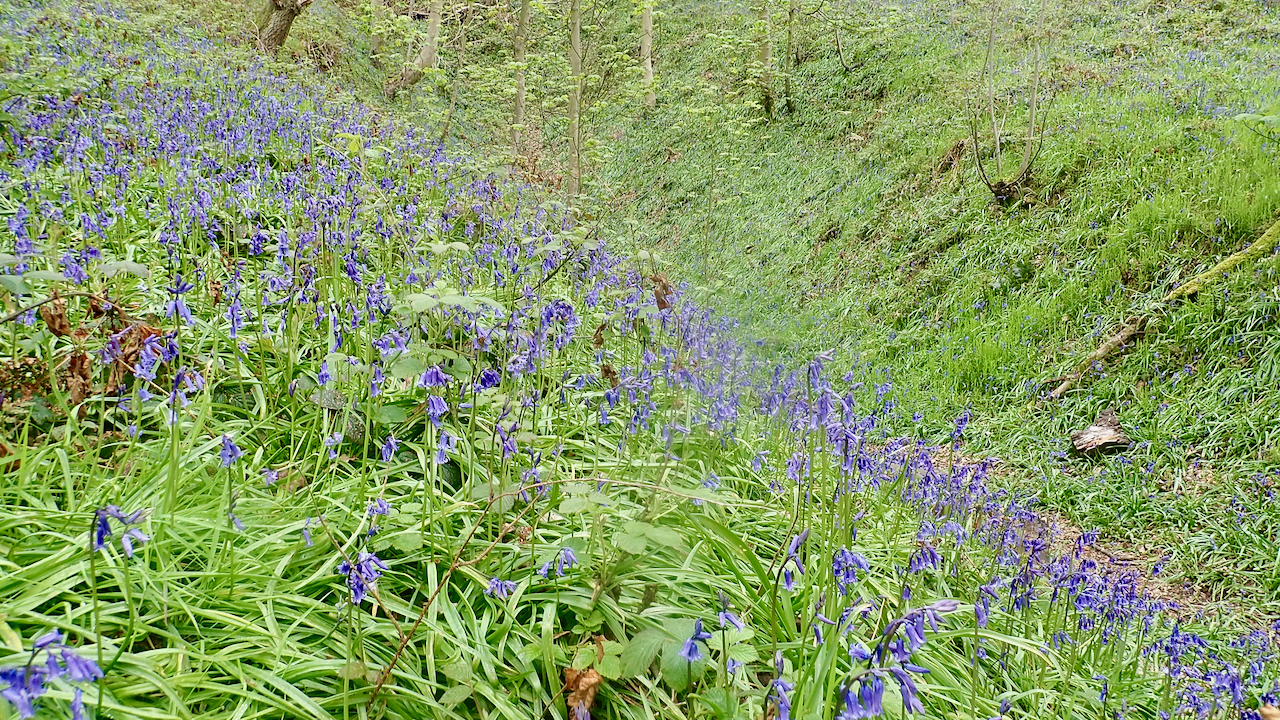Another wet morning. The bluebells seem to be slow this year, although perhaps still a bit early. Cliff Rigg Wood is south facing so the flowers emerge earlier than in the north-west facing Newton Wood.
These bluebells are in a gulley which is in a bowl at the south-east end of Cliff Rigg Wood known locally as Nettle Hole. The gulley is manmade, once a cutting for a tramway which went through a tunnel to Slacks Quarry. This can be seen on the 1894 O.S. map. By the next edition, 1915, the tramway is shown contouring around the hill.
The quarries were operated by Messrs. Winn and closed around 1918 although Cliff Rigg quarry was still used in the 1970s1o’Sullivan, Dan. “Great Ayton: A history of the village”. ISBN 0 9508858 0 0 1983
In November, 1894, there was an accident at Nettle Hole in which two quarrymen were killed, William Watson and David Pearson2“QUARRY ACCIDENT IN CLEVELAND.” York Herald, 20 Nov. 1894, p. 6. British Library Newspapers, https://link-gale-com.ezproxy.is.ed.ac.uk/apps/doc/R3215377996/GDCS?u=ed_itw&sid=GDCS&xid=ec8b609b. Accessed 8 May 2021.. “They were working in a place called the nettle hole in the Slacks Quarry, clearing away something off the road that had fallen from the side of the working on the previous day. … The stone that had fallen upon them came from the roof and not from the side of the working. The roof was 30ft high and was arched, and the stone that fell would be about one cwt.”
From this description it would seem that the whinstone Watson and Pearson were working was higher up the slope. Extraction was done both by quarrying and mining at different levels to enable two faces to be worked.
.
- 1o’Sullivan, Dan. “Great Ayton: A history of the village”. ISBN 0 9508858 0 0 1983
- 2“QUARRY ACCIDENT IN CLEVELAND.” York Herald, 20 Nov. 1894, p. 6. British Library Newspapers, https://link-gale-com.ezproxy.is.ed.ac.uk/apps/doc/R3215377996/GDCS?u=ed_itw&sid=GDCS&xid=ec8b609b. Accessed 8 May 2021.

Leave a Reply